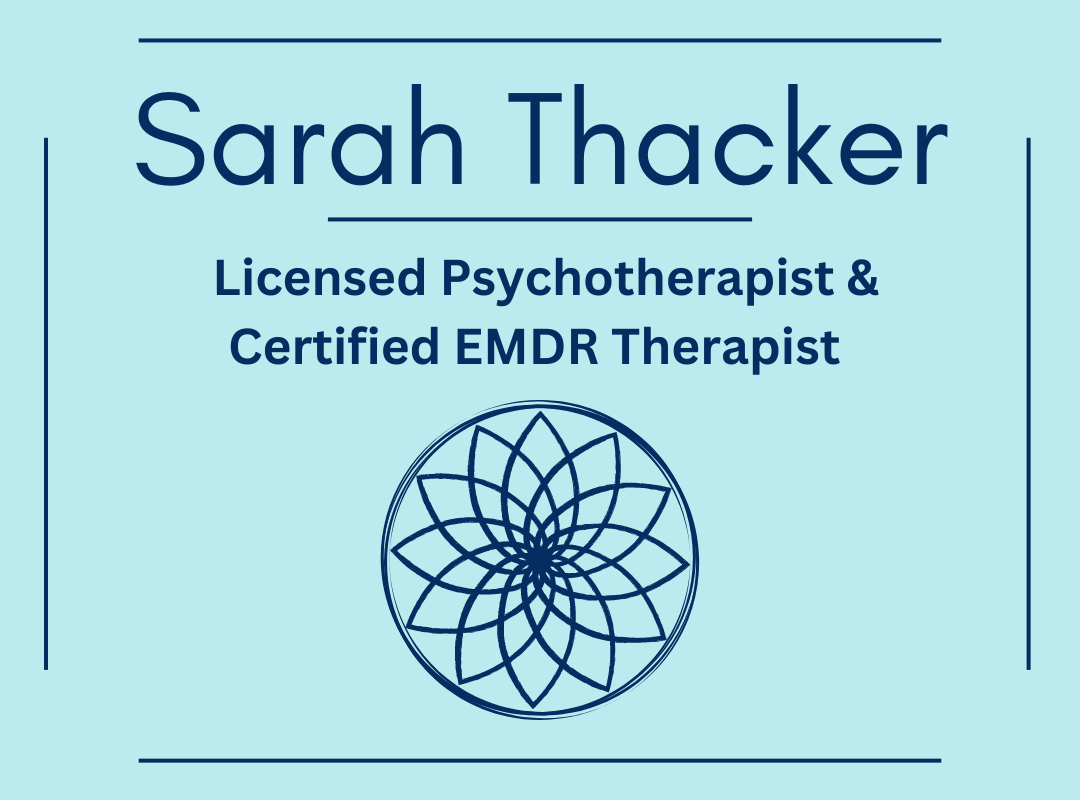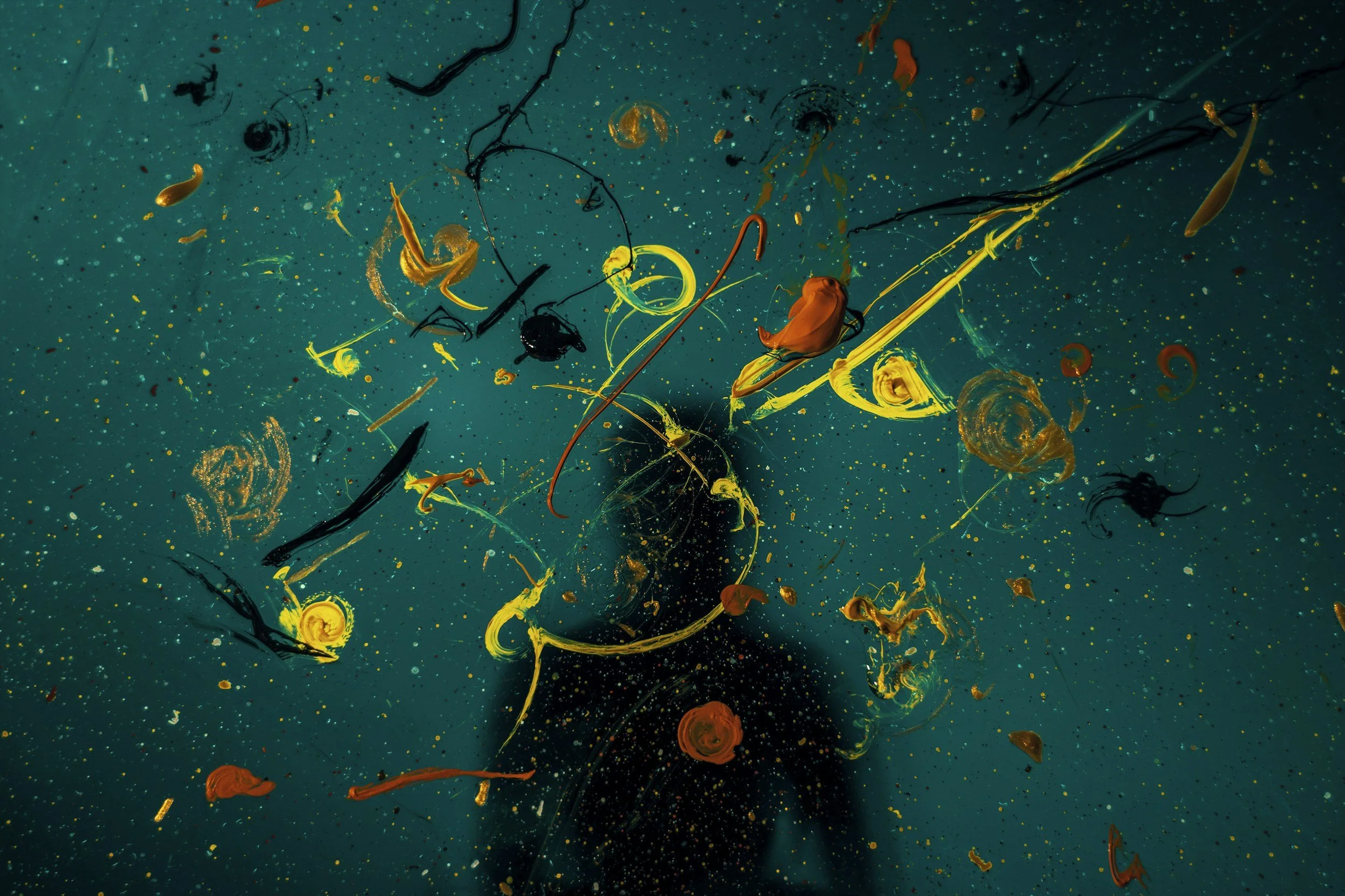Art creation is naturally healing and life-affirming. Art Therapy is a form of therapy where the creative arts are integrated into the therapeutic process to help facilitate healing. Using the creative arts and creative expression within psychotherapy, the creation process can encompass any artistic form. While drawing and painting might be the first of the arts that come to mind, art therapy utilizes sculpture, collage, music, drama, dance, movement, writing, storytelling, crafts, and more. When the creative arts are integrated in this way, it often allows emotional expression and release that can move very deeply into the psyche and inner world in a way that talking alone cannot always access. My process, Art-Mind-Body, was developed through the integration of art therapy along with yogic aspects and philosophies while drawing on traditional therapies, including cognitive and narrative therapy.
Our minds are impacted by so many forces, both internally and externally. You might find your mind in a constant state of fluctuation with thoughts, responses, imaginary conversations, and problem-solving, over and over in your head. The mind never seems to rest. Mental focus, curiosity, awareness, and attention can be created to facilitate change through shifts in perception and perspective through a variety of therapeutic, creative, and yogic techniques. When you use tools to understand and befriend your mind, such as mindfulness, meditation, cognitive behavior therapy, thought work, and narrative therapies, you can make a tremendous impact on your overall mental well-being.
Our body is a container that lovingly holds us. The body has many jobs, and yet it often is neglected or attended to last in the therapeutic realm. However, our nervous system is impacted by our thoughts, our experiences, and present moment circumstances. Therefore, learning to regulate it and offering opportunities to understand it and balance it all contribute to the therapeutic work and our overall well-being. Somatic practices and movement, when integrated into therapeutic work, allow healing on a deeply impactful level, beyond words and beyond the mind.
When these three components are integrated, they allow the possibility to create a peaceful relationship with your mind, your body, and your Self. That is how Art-Mind-Body was created, with the intention to use creative expression, somatic practices, and movement, integrated with cognitive techniques and mindfulness, in order to create an opportunity to facilitate healing in mind, body, and spirit.
Nearly 10 years ago I led an Art-Mind-Body workshop presentation at the American Art Therapy Association’s conference. After completing a yoga teacher training program in 2006, I was so intrigued by the healing impact of yoga, and after working as an art therapist since 2002, I knew the healing impact of art, and I wanted to find a way to integrate these healing arts to elevate my work. Since I led this training workshop years ago, I have gone on to become a certified health coach, certified yoga therapist, and certified EMDR therapist, and now I feel as though this workshop has evolved even further.
Art-Mind-Body as an integrative, experiential practice brings together the healing aspects of the creative arts, a variety of therapy techniques, and the yogic arts to create a system of healing that impacts mind, body, and spirit in a deeply meaningful and profound way.
Art is life enhancing. We know that art reflects life and that the desire to create is innate. This is where it can become a little intimidating. Many people say, “I can’t draw a straight line,” and therefore it seems that art-making is limited to drawing or painting, which can be daunting. Creativity can encompass anything that is creative: writing, acting, dancing, singing, sculpting, cooking, decorating, weaving, sewing, gardening… the list can go on and on.
When using the creative arts, it’s about the creation, not what is produced through the process of creating. Today is a great day to get creative, get curious, and challenge yourself to look within.
Here is one exercise you can use to begin to integrate the work of Art-Mind-Body today:
You can practice this sitting or reclining to begin, and have some paper and writing/drawing utensils nearby, just in case you are inspired to create in that form!
-Scan through your body in your mind’s eye, what do you notice, what do you feel? Is there tension anywhere, is there comfort anywhere, what sensations do you feel?
-What color would the sensations be if they were a color?
-What sound might the sensations produce?
-Is there a rhythm associated with this feeling?
-Is there a movement that the sensation would like?
-Are there words that can represent it?
-If you feel so inclined, reach for your paper and writing/drawing utensils and if you choose to draw, use line, shape, color, and form to create an image that represents what you noticed in your body.
If there were words that came to you, take some time write all about it.
-If there was a sound and/or a rhythm, can you use create the sound and/or rhythm, maybe use your voice note app to record it?
-Can you take the movement that the sensation would like and just be with your body and fully experience the movement mindfully?
If you created something, take a moment to be mindfully aware of what you created. Can you release any judgments and just be present with it?
Can you breathe into the spaces within your body and notice if anything has or will transform?
Scan through your body once more and intentionally relax your jaw, shoulders, hips, knees, and ankles. Lift the corners of your mouth, take a full, complete breath, and thank yourself for taking this time to explore, express, and to create presence in mind, body, and spirit.
If you are interested in learning more about Art-Mind-Body processes and opportunities feel free to reach out!
If you struggle with emotional eating, my workbook and expressive journal, Wholistic Food Therapy: A Mindful Approach to Making Peace with Food, offers space to create within it with art supplies, collage, and writing.
Wherever you find inspiration to create—literally anything—I encourage you to lean into it fully today.



